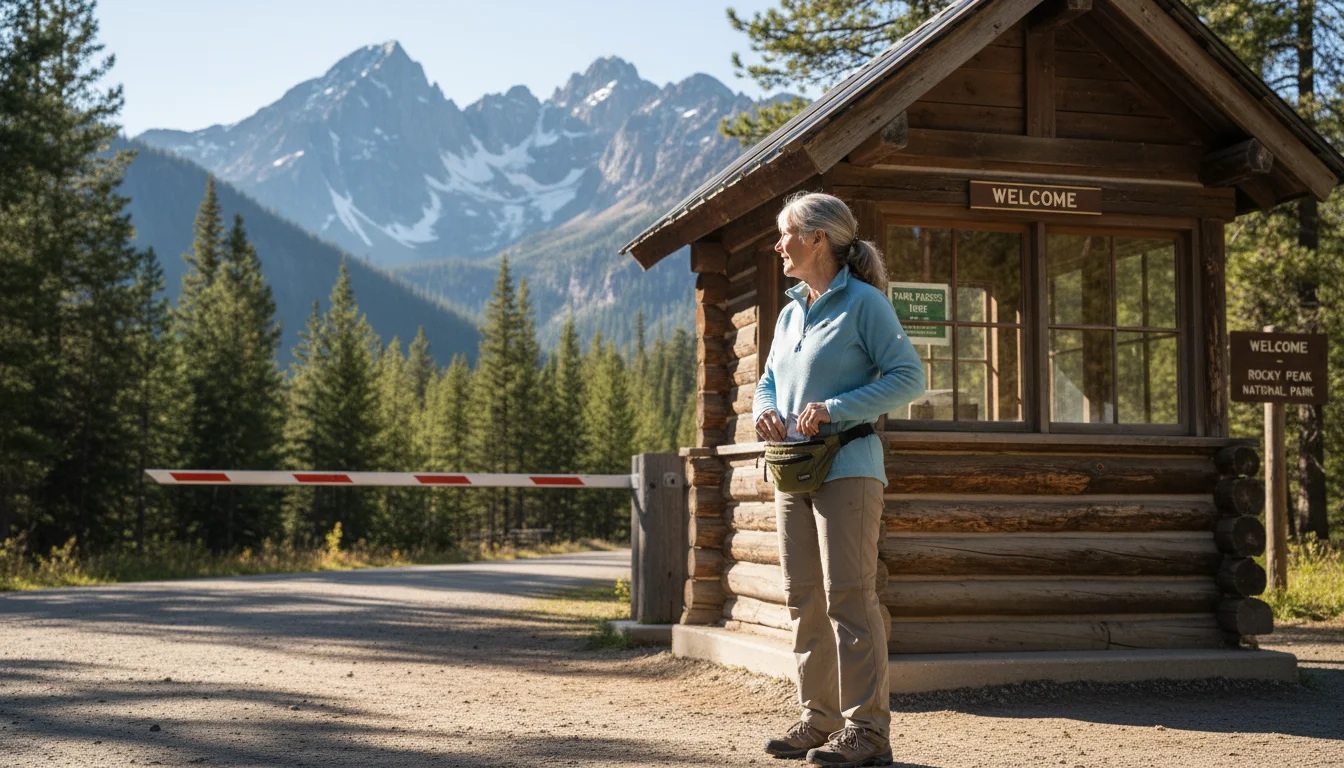Retirement offers a wonderful opportunity to explore the world, visit family, and experience new cultures. However, for many seniors living on a fixed income from Social Security, the cost of travel can seem daunting. The good news is that with smart senior travel planning, you can absolutely enjoy affordable senior trips without jeopardizing your financial stability. This guide is designed to empower you with actionable strategies to make your travel dreams a reality.
Creating a travel budget and sticking to it is the cornerstone of financially responsible travel. Think of it not as a restriction, but as a roadmap to adventure. By planning carefully, you can stretch your dollars further, see more of the world, and return home with memories, not debt.
This article is for informational purposes only and is not intended to be financial advice. Please consult with a qualified financial professional for advice tailored to your individual situation.

Travel During the “Shoulder Season”
The ‘Why’: The travel industry has three main seasons: peak season (when everyone travels, like summer or holidays), off-season (when weather might be less ideal), and the “shoulder season.” This sweet spot, typically in the spring and fall, offers the best of both worlds. You can enjoy pleasant weather and fewer crowds, all while saving significantly on airfare and accommodations, which are often the largest expenses in a travel budget.
The ‘How’:
- Identify the Shoulder Seasons: For European travel, this is often April-May and September-October. For U.S. destinations, it varies. For example, the shoulder season for national parks in the West might be late spring or early fall, avoiding the summer rush.
- Use Flexible Date Searches: When searching for flights online on sites like Google Flights or Kayak, use the “flexible dates” or “price graph” features. This allows you to see which days or weeks are cheapest to fly. Shifting your trip by even a few days can sometimes save you hundreds of dollars.
- Ask Hotels Directly: Call a hotel you’re interested in and ask about their rates during different months. Sometimes they offer unpublished deals for shoulder season travel to fill rooms.

Become a Master of Senior Discounts
The ‘Why’: One of the great financial perks of growing older is access to a wide array of senior discounts. These aren’t just small tokens; they can lead to substantial savings on nearly every aspect of your trip. Ignoring these discounts is like leaving money on the table, and for those managing a Social Security budget, every dollar saved is a dollar that can be used for another meal, activity, or future trip.
The ‘How’:
- Join AARP: For a small annual fee, an AARP membership (available to anyone 50+) unlocks thousands of discounts on hotels (like Hilton and Wyndham), car rentals (like Avis and Budget), cruises, and even restaurants.
- Always Ask: Many discounts are not advertised. Whether you’re booking a hotel room, buying a museum ticket, or paying for a train fare, make it a habit to ask, “Do you offer a senior discount?”
- Check Transportation Providers: Amtrak offers a 10% discount for travelers 65 and over on most rail fares. Many city bus and subway systems offer reduced fares for seniors as well. Some airlines, like United, may offer senior fares on select routes, but you often have to call or select the “Seniors (65+)” option on their website’s search tool.

Unlock the Value of a National Parks Senior Pass
The ‘Why’: If you enjoy the natural beauty of the United States, the National Park Service Senior Pass is arguably the best deal in travel. It provides an incredibly affordable way to access more than 2,000 federal recreation sites across the country. For a very small investment, you gain access to a lifetime of priceless experiences, making it a cornerstone of budget travel for seniors who love the outdoors.
The ‘How’:
- Choose Your Pass: U.S. citizens or permanent residents aged 62 or older can purchase a Lifetime Senior Pass for a one-time fee of $80 or an Annual Senior Pass for $20. If you buy four consecutive annual passes, you can trade them in for a lifetime pass.
- Purchase Your Pass: You can buy a pass in person at many federal recreation sites, online through the USGS Store, or by mail. Be aware that online or mail-in orders have an additional $10 processing fee.
- Understand the Benefits: The pass admits the pass holder and any accompanying passengers in a private vehicle. At sites that charge per person, it covers the pass holder and up to three other adults. It can also provide a discount on some amenity fees, like camping.

Rethink Your Accommodations for Big Savings
The ‘Why’: After transportation, lodging is often the most significant travel expense. Moving beyond traditional hotels can dramatically lower your costs, freeing up funds in your budget. This is especially true for longer trips, where saving even $30 a night can add up to over $200 in a week.
The ‘How’:
- Consider Extended-Stay Hotels: Chains like Extended Stay America, Homewood Suites, or Residence Inn offer rooms with kitchenettes. This allows you to prepare some of your own meals—like breakfast and lunch—which is a huge money-saver compared to eating out three times a day.
- Explore Home Exchanges: If you’re an adventurous homeowner, services like HomeExchange or HomeLink allow you to swap homes with someone in a destination you want to visit. You get a free place to stay, and they get to stay in your home. This is a fantastic option for affordable senior trips that last several weeks.
- Look into House-Sitting: Websites like TrustedHousesitters connect homeowners who need someone to watch their property and pets with travelers willing to do so in exchange for free accommodation. This can provide a comfortable, home-like experience at a minimal cost.

Plan Your Transportation Strategically
The ‘Why’: How you get to your destination and how you get around once you’re there can have a massive impact on your budget. A flight might seem quickest, but when you factor in the cost of getting to the airport, checked bags, and transportation at your destination, a scenic drive or train ride could be a more financially prudent and enjoyable choice.
The ‘How’:
- Compare Driving vs. Flying: For trips under 500 miles, driving is often cheaper, especially for two or more people. Use AAA’s Gas Cost Calculator to estimate fuel costs and add in potential wear-and-tear on your vehicle. Compare this total to the cost of flights, baggage fees, and a rental car or rideshares.
- Embrace Public Transit: Once at your destination, especially in major cities, utilize public transportation. A weekly subway or bus pass is almost always cheaper than relying on taxis or rideshares. Many cities offer senior discounts on these passes.
- Book Rental Cars in Advance: If you need a rental car, book it well in advance and use discount codes from organizations like AARP or Costco. Avoid renting at the airport, which often has higher taxes and fees; a short taxi ride to an off-site location can save you money.

Pack Light and Smart to Avoid Unnecessary Fees
The ‘Why’: In today’s travel landscape, airline baggage fees are a common and costly surprise. A single checked bag can cost $30-$40 each way, meaning a couple could spend an extra $120-$160 on a round trip. Mastering the art of packing in a carry-on not only saves you money but also saves you time at the airport and reduces the risk of lost luggage.
The ‘How’:
- Use Packing Cubes: These small fabric organizers allow you to compress your clothing and fit more into a small suitcase.
- Create a Capsule Wardrobe: Choose versatile clothing items in a similar color palette that can be mixed and matched to create multiple outfits.
- Pack Solid Toiletries: Solid shampoo, conditioner, and toothpaste bars save space and aren’t subject to the 3.4-ounce liquid limit for carry-ons.
- Bring a Reusable Water Bottle and Snacks: Pack an empty water bottle to fill up after you pass through security, and bring your own snacks. This helps you avoid overpriced airport food and stay hydrated.

Choose the Right Travel Insurance to Protect Your Assets
The ‘Why’: This may seem like an added expense, but for a retiree, good travel insurance is a vital tool for asset protection. A medical emergency abroad can be financially devastating, as Medicare typically does not cover healthcare services outside of the United States. Trip cancellation insurance can also refund your prepaid, non-refundable costs if you have to cancel for a covered reason, protecting the money you’ve invested in your trip.
The ‘How’:
- Check Your Medicare Supplement Plan: Some Medigap plans (like C, D, F, G, M, and N) offer foreign travel emergency healthcare coverage, but it has a lifetime limit. Understand your existing coverage before you buy more.
- Look for Comprehensive Policies: A good policy for seniors should include robust emergency medical coverage (at least $100,000 is often recommended), emergency medical evacuation, and trip cancellation/interruption coverage.
- Use Comparison Websites: Sites like InsureMyTrip.com or SquareMouth.com allow you to compare policies from different providers to find one that fits your needs and budget. Be sure to disclose any pre-existing medical conditions.

Understand How Travel Can Affect Your Social Security
The ‘Why’: This piece of senior travel planning is purely about financial knowledge and compliance. For most domestic travel and short international trips, there is no issue. However, if you plan to travel outside the U.S. for an extended period, you need to understand the Social Security Administration (SSA) rules to ensure your benefits are not interrupted. Protecting this income stream is paramount.
The ‘How’:
- The 30-Day Rule: Generally, if you are a U.S. citizen, you can continue to receive your Social Security payments as long as you are outside the U.S. for less than 30 consecutive days.
- Extended Stays: If you are a U.S. citizen, you can receive your payments in most countries. However, payments are generally stopped after you have been outside the U.S. for more than 30 consecutive days if you are in certain countries, such as Cuba or North Korea. The SSA maintains a list of these countries on its website.
- Inform the SSA: It is a good practice to inform the SSA of any long-term travel plans. You should also ensure your address and direct deposit information are up to date so your payments continue seamlessly. You can use the SSA’s online payment screening tool to see how your travel might affect your benefits.
For expert guidance on senior health and finance, visit Administration for Community Living (ACL), Eldercare Locator, AARP and Alzheimer’s Association.
|
Fact-Checked Content
Our editorial team reviews all content for accuracy and updates it regularly. Learn about our editorial process →
|

















